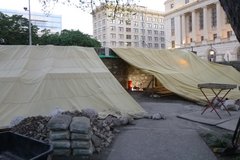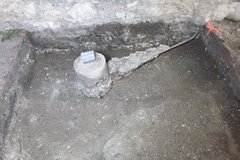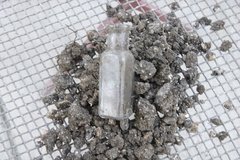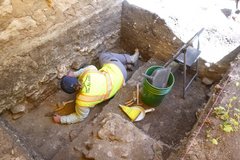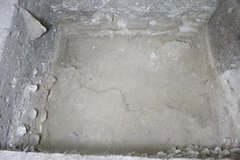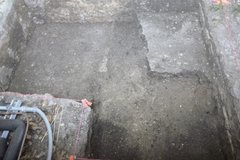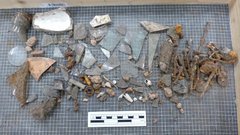After a 2 week hiatus, archaeologists are back at the Long Barrack to continue excavations. The absence was due to the installation of a temporary drainage solution to prevent precipitation and other weather conditions from negatively impacting the excavation units and the newly exposed portions of the historic Long Barrack. Once archaeologists were able to return to excavations, two new units—EU-8 and EU-15—were opened along the Long Barrack. Excavations also continued in EUs 10 and 12.
EU-8 is located along the Long Barrack wall and southeast of the door leading into the structure. The unit measure 1.5 meters by 2 meters. Archaeologists reached a depth of 40 centimeters below surface by the end of the week. In the top levels of the unit, archaeologists encountered evidence of previous disturbances and modern fill episodes. An old, abandoned electrical conduit was immediately uncovered. Associated with the utility is a concrete pillar that extends into deeper levels. The soils are indicative of landscaping and reflect what archaeologists have seen in other excavation units. Due to previous disturbances, artifacts from this unit are a mixture of modern and historic. One of the more notable finds was a complete medicine bottle.

